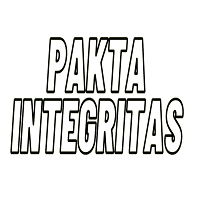PENGARUH VARIASI BASIS GELLING AGENT TERHADAP KARAKTERISTIK FISIK MASKER GEL PEEL-OFF EKSTRAK DAUN PEPAYA (Carica papaya L.)
DOI:
https://doi.org/10.47522/jmk.v5i2.170Keywords:
Papaya Leaf, gelling agent, gelatin, CMC-Na, Karbopol 940Abstract
Introduction: Acne is a chronic inflammation of the sebaceous glands due to inflammation and bacterial infection. One of the plants used to treat acne is papaya leaves (Carica papaya L.) because it has alkaloid compounds as antibacterial causes of acne. This study aims to determine the effect of gelling agent base variations on the physical characteristics of peel-off gel mask preparations and to determine the gelling agent base that produces the best physical characteristics of the preparation.
Method: The method used was an experimental study using a completely randomized design (CRD) with three treatments and nine repetitions. Variations of the base gelling agent used were gelatin, CMC-Na, and carbopol 940. Each formula was tested for physical characteristics in the form of organoleptic tests, homogeneity, viscosity, spreadability, adhesion, drying time, and pH. Data analysis was carried out by testing for normality and homogeneity with the SPSS program. If the distribution of the resulting data shows normal and homogeneous, then the ANOVA test is used, while if it does not meet the normality and homogeneity requirements, the Kruskal-Wallis test is used with a 95% confidence level.
Results: The resulting research shows that variations in the gelling agent gelatin, CMC-Na, and carbopol affect the physical characteristic test of papaya leaf extract peel-off gel masks in the form of pH, viscosity, adhesion, spreadability and drying time. Statistical results show that variations in gelling agents produce significant differences.
Conclusion: Variations in gelling agent bases affect the physical characteristics of papaya leaf extract peel-off gel masks (Carica papaya L.) in the form of pH, viscosity, adhesion, spreadability and drying time of preparations. The gelling agent base that produces the best characteristics of papaya leaf extract (Carica papaya L.) peel-off gel mask preparation, namely gelling agent Karbopol 940 in formula 3 because it produces preparations that meet the requirements of all physical characteristic tests.
References
Ahmad, A. R., Juwita, J., & Ratulangi, S. A. D. (2015) 'Penetapan Kadar Fenolik dan Flavonoid Total Ekstrak Metanol Buah dan Daun Patikala (Etlingera elatior (Jack) R.M.SM)', Pharmaceutical Sciences and Research, 2(1), pp.1–10. doi.org/10.7454/psr.v2i1.3481
Aldi Rompas, R., Jaya Edy, H., & Yudistira, A. (2012). 'isolasi Dan Identifikasi Flavonoid Dalam Daun Lamun (SYRINGODIUM ISOETIFOLIUM)'. ejournal.unsrat.ac.id. Retrieved 9 June 2021 from https://ejournal.unsrat.ac.id/index.php/pharmacon/article/viewFile/487/380
Azizah, D. N., Kumolowati, E., & Faramayuda, F. (2014). 'Penetapan Kadar Flavonoid Metode Alcl3 Pada Ekstrak Metanol Kulit Buah Kakao (Theobroma cacao L.)', Kartika Jurnal Ilmiah Farmasi, 2(2), pp. 45–49. doi.org/10.26874/kjif.v2i2.14
Chang C. Yang M, W. H. C. J. (2002). 'Estimation of Total Flavonoid Content in Propolis by Two Complementary Colorimetric Methods', Journal of Food Drug Anal.
Da Silva, L. A. L., Pezzini, B. R., & Soares, L. (2015). 'Spectrophotometric determination of the total flavonoid content in Ocimum basilicum L. (Lamiaceae) leaves', Pharmacognosy Magazine, 11(41), pp. 96–101. doi.org/10.4103/0973-1296.149721
Fitriansyah, S. N., Fidrianny, I., & Ruslan, K. (2017). 'Correlation of Total Phenolic, Flavonoid and Carotenoid Content of Sesbania sesban (L. Merr) Leaves Extract with DPPH Scavenging Activties', International Journal of Pharmacognosy and Phytochemical Research, 9(1). doi.org/10.25258/ijpapr.v9i1.8047
Hakim, A., (JSM), R. S.-J. S. M.. (2020). 'Narrative Review: Optimasi Etanol sebagai Pelarut Senyawa Flavonoid dan Fenolik', Journal.Umpalangkaraya.Ac.Id. http://journal.umpalangkaraya.ac.id/index.php/jsm/article/view/1641
J., B., & Mendham. (1994). Buku Ajar Vogel Kimia Analisis Kuantitatif Anorganik. Buku Kedokteran EGC, Jakarta.
Khumaira Sari, A., & Ayuchecaria Akademi Farmasi ISFI Banjarmasin, N. (2017). 'Penetapan Kadar Fenolik Total Dan Flavonoid Total Ekstrak Beras Hitam (Oryza Sativa L) Dari Kalimantan Selatan', Jurnal Ilmiah Ibnu Sina (Vol. 2). http://e-jurnal.stikes-isfi.ac.id/index.php/JIIS/article/view/112
Nofita, D., Sari, S. N., & Mardiah, H. (2020). 'Penentuan Fenolik Total dan Flavonoid Ekstrak Etanol Kulit Batang Matoa (Pometia pinnata J.R& G.Forst) secara Spektrofotometri', Chimica et Natura Acta, 8(1), pp. 36. /doi.org/10.24198/cna.v8.n1.26600
Puspitasari, A. D., Anwar, F. F., & Faizah, N. G. A. (2019). Aktivitas Antioksidan, Penetapan Kadar Fenolik Total Dan Flavonoid Total Ekstrak Etanol, Etil Asetat, Dan N-Heksan Daun Petai (Parkia speciosa Hassk.)', Jurnal Ilmiah Teknosains, 5(1), pp. 1. doi.org/10.26877/jitek.v5i1.3490
Depkes RI. (2000). Parameter Standar Umum Ekstrak Tumbuhan Obat. Departemen Kesehatan Republik Indonesia, Jakarta.
Depkes RI. (2008). Farmakope Herbal Indonesia. Departemen Kesehatan Republik Indonesia, Jakarta
Stankovic, M. (2014). Total phenolic content, flavonoid concentration and antioxidant activity of Marrubium peregrinum L. Extracts. researchgate.net. Retrieved 9 June 2021 from https://www.researchgate.net/publication/230766461
Werdhasari, A. (2014). "Peran Antioksidan Bagi Kesehatan', Jurnal Biomedik Medisiana Indonesia, 3(2), pp. 59–68.
Winarsi, H. (2007). Antioksidan Alami dan Radikal Bebas. Kanisius : Yogyakarta
Downloads
Published
How to Cite
Issue
Section
License
Copyright (c) 2023 Jurnal Mitra Kesehatan

This work is licensed under a Creative Commons Attribution-NonCommercial-ShareAlike 4.0 International License.
Jurnal Mitra Kesehatan memberikan akses terbuka terhadap siapapun agar informasi pada artikel ini dapat bermanfaat bagi orang banyak. Jurnal dapat diakses tanpa dipungut biaya, sesuai dengan lisensi creative commons yang digunakan.










